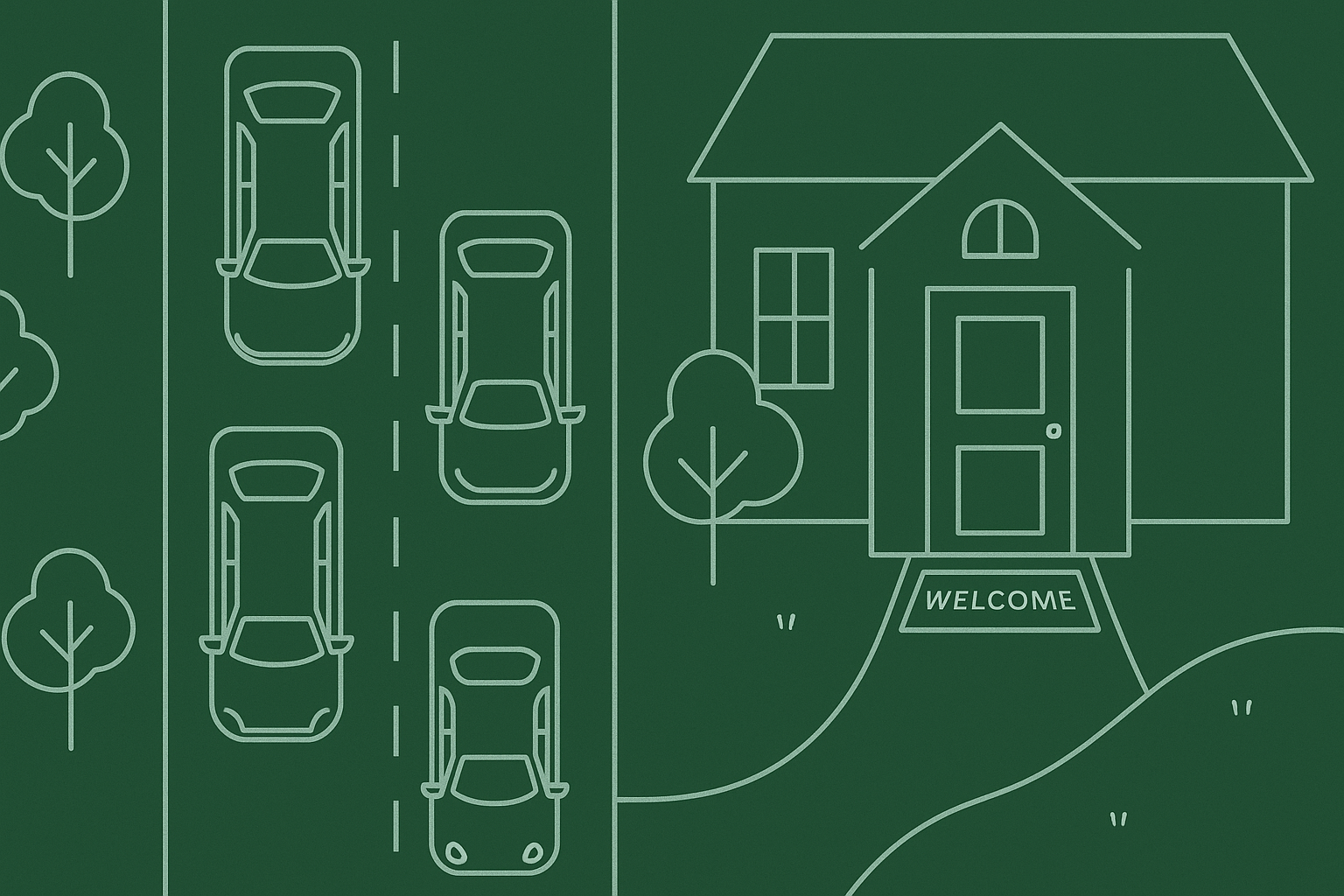When we first moved to Fairfax County (all the way from New Orleans!), we had no idea how crucial it would be to master the local commute. Sure, we heard the horror stories about D.C. traffic, but Fairfax County has its own unique quirks—from slugging stations to variable toll roads and beyond. Whether you’re new to the area or just looking for insider strategies, here’s a deep dive into the commuting landscape of Fairfax County.
1. Understand the Traffic Reality—Even on Weekends
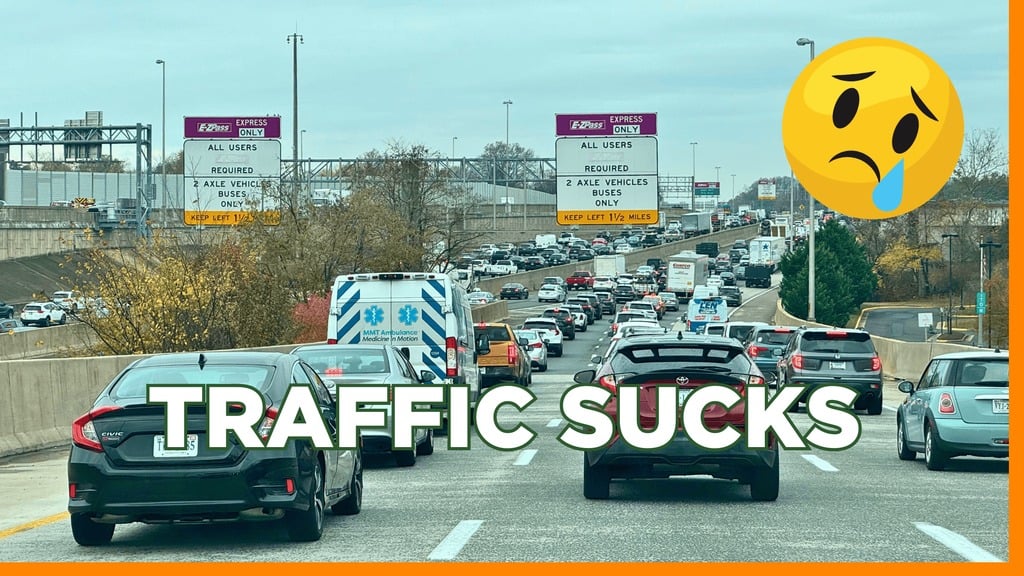
Yes, traffic is a thing here—even Saturday and Sunday.
- Over one million residents call Fairfax County home, leading to significant car volume.
- Interstates like I-66, I-95, and I-495 can be hectic at rush hour. Don’t be surprised if you hit congestion on weekends near shopping centers and tourist spots.
- No grid layout: Neighborhoods don’t have neatly intersecting streets or many shortcuts, so you’ll often navigate single-lane roads in densely populated areas.
What to do:
- Plan on using navigation apps (Google Maps, Apple Maps, or Waze) daily, especially if your route involves highways.
- Allow extra travel time on Saturdays, especially around places like Tysons, Reston Town Center, or Mosaic District.
Insider Note: You’re not alone in tackling traffic. People endure it because they value the strong job market, top schools, and lifestyle Fairfax County offers—which helps keep real estate values steady.
2. Budget for a Car-Centric Lifestyle

Fairfax County isn’t as walkable as you might expect—public transit doesn’t reach every neighborhood.
- Some areas, like Reston or Tysons, have pedestrian-friendly developments, but overall, you’ll often need a car for daily errands.
- The peaceful suburban design means fewer crowds but also fewer sidewalks and bike lanes in many neighborhoods.
What to do:
- Research neighborhoods with better walkability if that’s important to you—like parts of Reston, Tysons, Vienna, or Fairfax City.
- Factor car expenses (gas, maintenance, insurance) into your budget.
- Enjoy plentiful parking—you rarely have to circle blocks like in dense urban areas.
Insider Note: If you love biking or walking, check out the Fairfax County Trails or the W&OD Trail for safer, scenic routes around the region.
3. Leverage the Metro’s 14 Stops
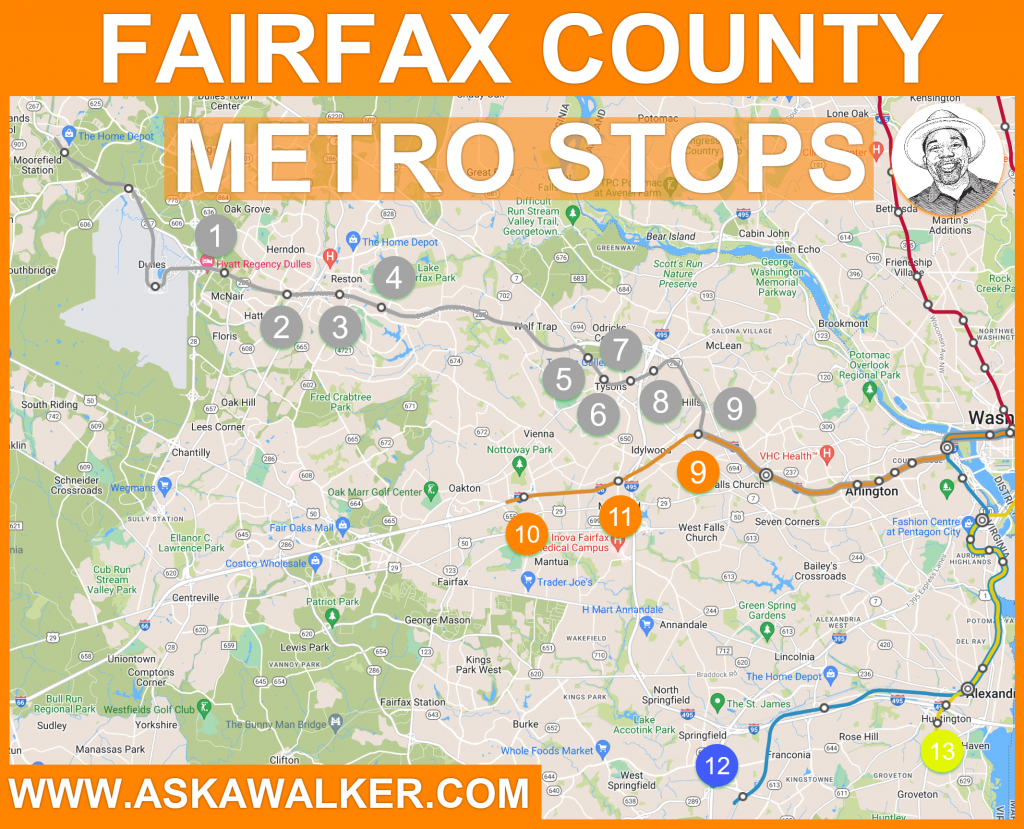
The Washington Metropolitan Area Transit Authority (Metro) is a huge asset if you live or work near a station.
- Fairfax County has 14 Metro stops on the Yellow, Blue, Orange, and Silver lines.
- Major stations include Vienna, Dunn Loring, Franconia-Springfield, Huntington, McLean, and Tysons.
- These lines connect to D.C., Maryland, and other parts of Northern Virginia.
What to do:
- Explore which line is most convenient for your workplace or school.
- Use park-and-ride lots, but arrive early if you want a guaranteed spot.
- Grab a reloadable SmarTrip card to save time and money on fares.
Insider Note: If you’re heading to D.C. on a weekday, avoid rush hours between 7–9 AM and 4–6 PM if possible. Trains can get extremely packed.
4. Check Out the Fairfax Connector Bus System
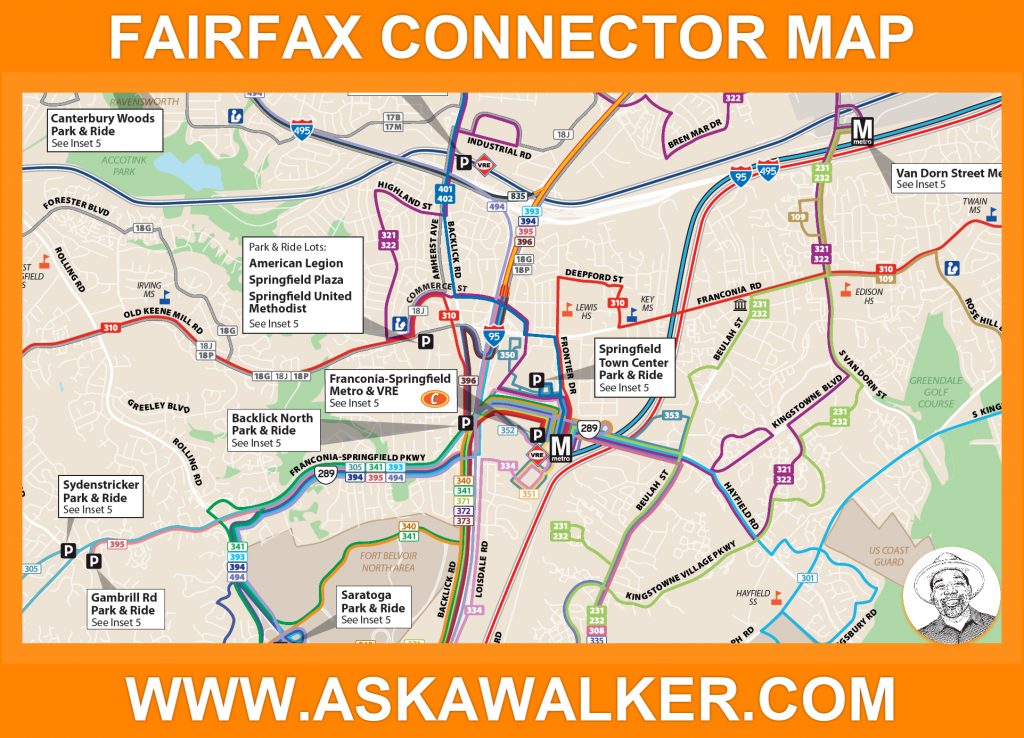
The Fairfax Connector is the largest local bus system in Northern Virginia, running 91 routes that serve about 30,000 passengers daily.
- These buses connect many Metro stations, shopping centers, and neighborhoods not easily accessible by train.
- If you work at The Pentagon, there’s also a dedicated Department of Defense shuttle bus.
What to do:
- Map out if there’s a Fairfax Connector route near you. It could save you from daily parking fees at Metro stations.
- Visit fairfaxcounty.gov/connector/schedules for real-time updates.
- Combine bus + Metro for a smoother commute.
Insider Note: Learning the bus schedule can be tricky at first, but you might find fewer crowds than the Metro, and a guaranteed seat.
5. Ride the VRE (Virginia Railway Express)
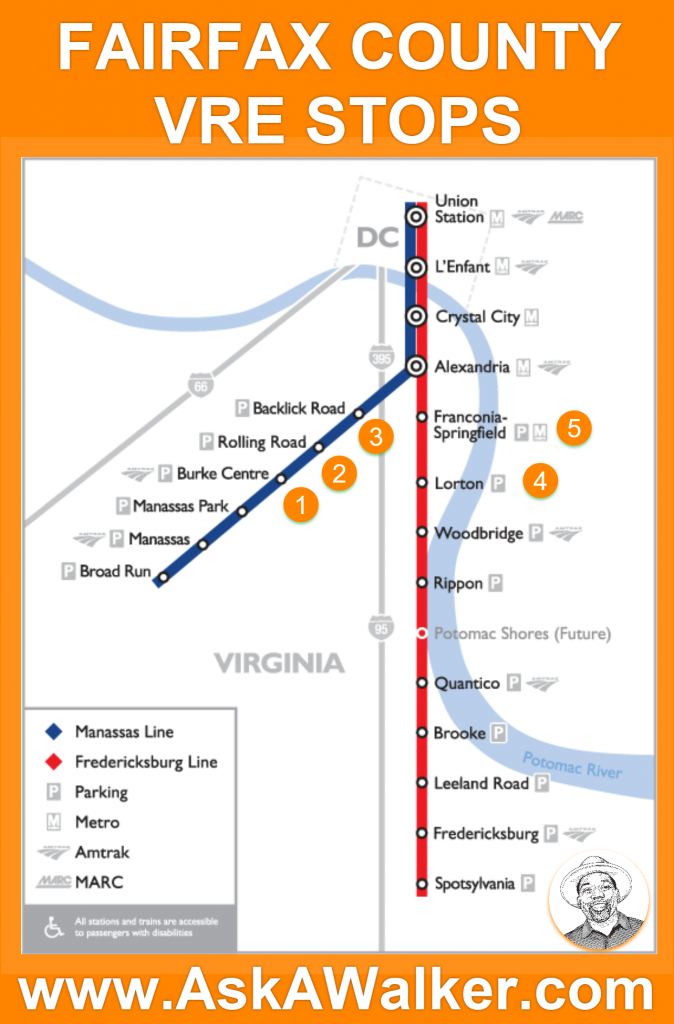
VRE is a commuter rail line that primarily runs along I-66 and I-95.
- Five Fairfax County stations: Burke Centre, Rolling Road, Backlick Road, Lorton, and Franconia-Springfield.
- Trains link suburbs to Alexandria, Crystal City, and Union Station in D.C.
Why it’s great:
- Often a calmer commute than driving, with scenic rail views.
- Kids can ride free under certain age limits—family-friendly option.
What to do:
- Check the VRE schedule; midday service can be limited, so plan around rush hours.
- Consider a monthly pass if you ride frequently—savings add up.
Insider Note: Some riders prefer ending at Union Station for quick Red Line or Amtrak transfers. Board early if you want a seat, as trains fill up fast.

6. “Slugging”: The Free HOV Hack
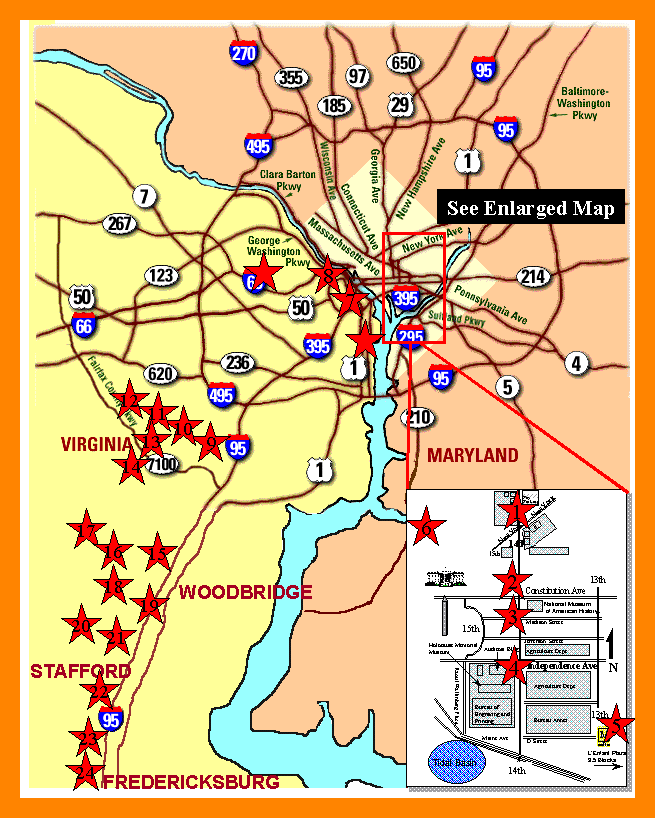
Slugging is a local commuting gem that dates back decades in the D.C. metro area.
- Strangers form informal carpools to meet HOV requirements and zip through traffic.
- Fairfax County has six slugging stations in Springfield: Bob’s, Daventry, Cardinal Plaza, Rolling Valley, Huntsman, and Mobile Station.
Why you should try it:
- Completely free—no tolls or passenger fees.
- Less congestion in HOV lanes can drastically shorten commute times.
What to do:
- Check out Slug-Lines.com for line locations, guidelines, and peak times.
- Get comfortable with slugging etiquette: minimal conversation unless initiated, front passenger seat open first, etc.
Insider Note: Slugging might feel awkward initially, but many locals swear by it. It’s the original “rideshare” before apps existed.
7. Plan Around Dynamic Tolls & Extreme Weather

Tolls
- I-66 Inside the Beltway: Tolls vary by traffic volume, sometimes spiking to double digits.
- An E-ZPass is essential for HOT (High-Occupancy/Toll) lanes if you use them regularly.
Weather
- Hot, humid summers can lead to severe thunderstorms and flash floods.
- Snow & ice events occur every winter or so; a major storm can shut down roads.
What to do:
- Check real-time toll rates before leaving so you’re not blindsided by surge pricing.
- Keep an umbrella or a small winter kit in your car—storms or snow can arrive quickly.
Insider Note: Sometimes paying the toll is worth shaving an hour off your drive. Other times, local roads might be faster if traffic is light. Also, watch local forecasts for warnings about heat advisories or snow emergencies.
Final Thoughts on Navigating Fairfax County
Yes, traffic can be tough and you’ll likely need a car for most errands, but Fairfax County offers multiple commuting options:
- Metro with 14 stops
- Fairfax Connector bus system
- VRE commuter rail for certain corridors
- Slugging for HOV lanes
- Strategic toll roads (if you’re willing to pay)
- Scenic back roads for off-peak times
It might take some trial and error to find your perfect route, but once you do, you’ll see why so many people love living here—the job market, schools, and diverse amenities often tip the scales in Fairfax County’s favor.
Ready to learn more about Fairfax County or explore neighborhoods near your favorite commute route?
- Check out our Fairfax County Relocation Guide for deeper insights.
- Or Schedule a Virtual Consultation to find a home that fits your commuting and lifestyle needs.
Safe travels—and welcome to Fairfax County!
